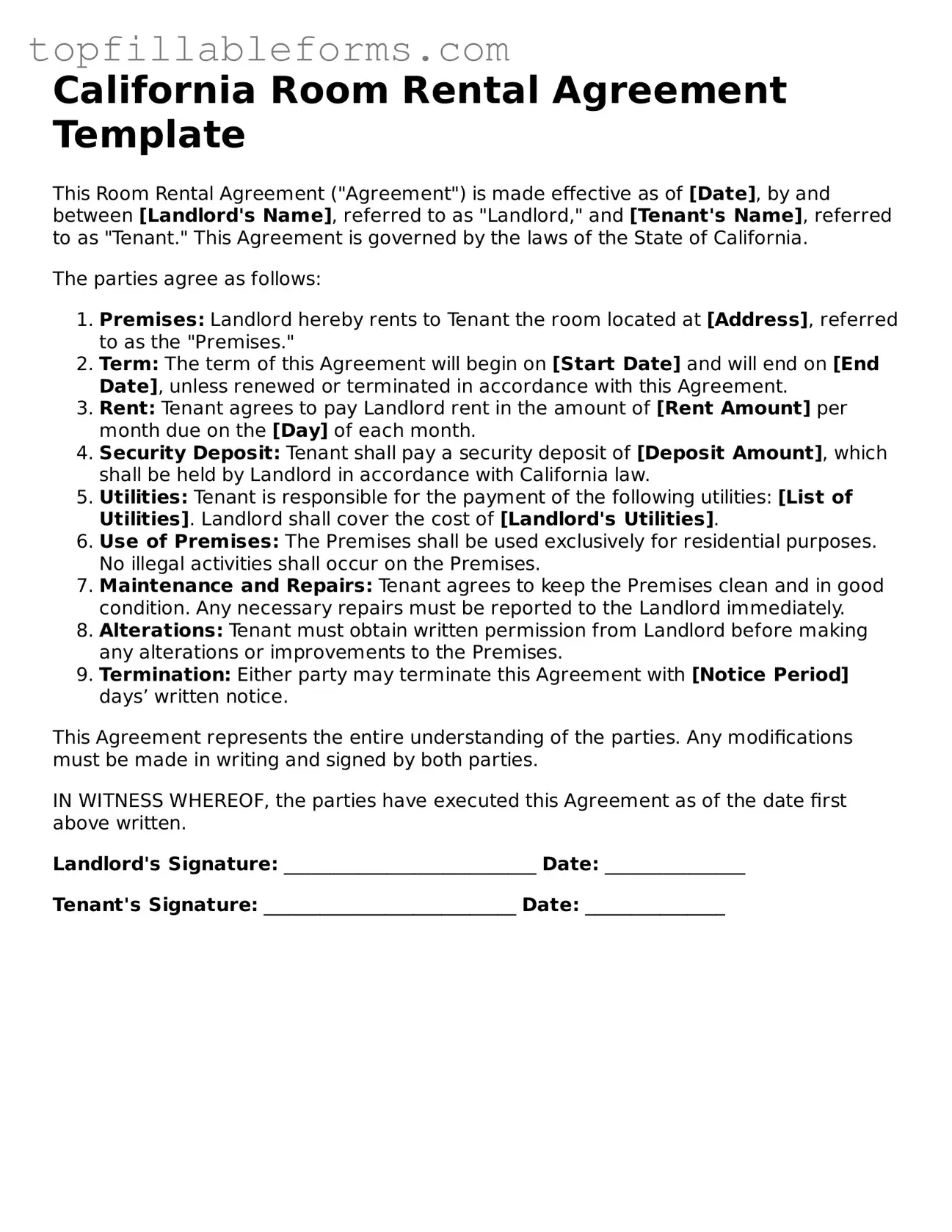California Room Rental Agreement Template
This Room Rental Agreement ("Agreement") is made effective as of [Date], by and between [Landlord's Name], referred to as "Landlord," and [Tenant's Name], referred to as "Tenant." This Agreement is governed by the laws of the State of California.
The parties agree as follows:
- Premises: Landlord hereby rents to Tenant the room located at [Address], referred to as the "Premises."
- Term: The term of this Agreement will begin on [Start Date] and will end on [End Date], unless renewed or terminated in accordance with this Agreement.
- Rent: Tenant agrees to pay Landlord rent in the amount of [Rent Amount] per month due on the [Day] of each month.
- Security Deposit: Tenant shall pay a security deposit of [Deposit Amount], which shall be held by Landlord in accordance with California law.
- Utilities: Tenant is responsible for the payment of the following utilities: [List of Utilities]. Landlord shall cover the cost of [Landlord's Utilities].
- Use of Premises: The Premises shall be used exclusively for residential purposes. No illegal activities shall occur on the Premises.
- Maintenance and Repairs: Tenant agrees to keep the Premises clean and in good condition. Any necessary repairs must be reported to the Landlord immediately.
- Alterations: Tenant must obtain written permission from Landlord before making any alterations or improvements to the Premises.
- Termination: Either party may terminate this Agreement with [Notice Period] days’ written notice.
This Agreement represents the entire understanding of the parties. Any modifications must be made in writing and signed by both parties.
IN WITNESS WHEREOF, the parties have executed this Agreement as of the date first above written.
Landlord's Signature: ___________________________ Date: _______________
Tenant's Signature: ___________________________ Date: _______________
